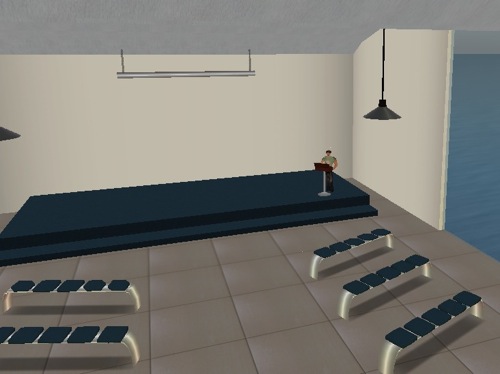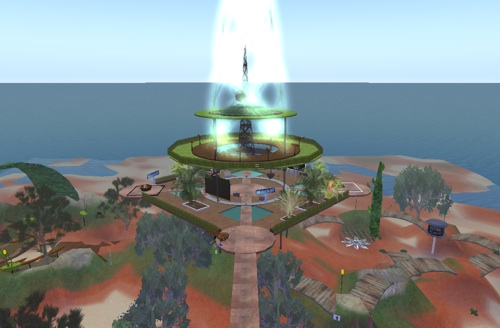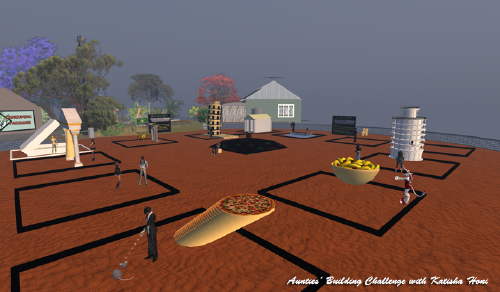1. Ars Technica (USA) – Real banking coming to virtual worlds. “Virtual economies of MMO games have been becoming increasingly intertwined with real-world money over the past few years. Titles like Second Life allow players to exchange cash for in-game currency, while others like EVE Online are player-driven and don’t limit currency or materials in the game’s economy. Now, however, the lines are being blurred even further, as a Swedish video game developer has been granted preliminary approval for a real banking license by the Swedish Finance Supervisory.”
2. Gerson Lehrman Group – High risk, High Reward: MMOGs as the Next Wave of Entertainment Media. “Gazillion Entertainment has captured headlines by inking a long-term deal with Marvel for creating online games based on Marvel’s characters. Gazillion also has other IP-related agreements, such as LEGO World. The company acquired online developer NetDevil last year and has quietly acquired other small studios to build up to their current 300-strong team. This is not the first agreement to produce online games (massively multiplayer online games — MMOGs — or virtual worlds, which are becoming increasingly synonymous) based on mass-market properties, but it is notable in its breadth and term: apparently all of Marvel’s 5000+ characters are included, and for a span of ten years. Successful MMOGs typically take 2-3 years to produce, so there is some room for a running start there, and historically these products have retained strong revenue for between five and ten years, making a long-term agreement like this sensible.”
3. MSNBC (USA) – UC San Diego and IBM Launch Center for Next-Generation Digital Media to Power Tomorrow’s Virtual Worlds. “Researchers at the University of California, San Diego today announced plans for a new campus center dedicated to invent the next generation of virtual worlds, multiple player online games, and high fidelity digital cinema, using one of the world’s most sophisticated computer servers — the IBM System z mainframe. IBM (NYSE: IBM) provided a Shared University Research (SUR) award to help the university jump-start its new Center for Next-Generation Digital Media on the UC San Diego campus. In addition to multiple peripherals and additional support, the IBM award consists of the company’s newest System z10 Enterprise Class server with the Cell Broadband Engine (Cell/B.E.).”
4. ReadWriteWeb (USA) – Finally, A Practical Use for Second Life. “When you think of virtual worlds, the first one that probably pops into your head is Second Life, but in reality, there are a number of different virtual worlds out there. There are worlds for socializing, worlds for gaming, even worlds for e-learning. But one thing that most virtual worlds have in common is that they are places for play, not practicality. (Yes, even the e-learning worlds are designed with elements of “fun” in mind). Outside of some reports that virtual worlds will replace web conferencing in the enterprise, we haven’t seen a lot of innovation in this space which would make businesses sit up and take notice. However, that may be about to change thanks to new software that lets you perform data visualization and manipulation techniques within the virtual world environment.”
5.The Ontarian (Canada) – Out of the dungeon and into the chat room. “Just over a decade ago the release of the popular romantic comedy, You’ve Got Mail, helped make the concept of meaningful social interaction online seem realistic and accessible to the average internet user. The Matrix, released a year later in 1999, likewise offered a vision of a shared virtual existence (though admittedly with more sinister implications). At around this time, the internet was a rather new and startling phenomenon to the average person. According to the International Telecommunication Union, developed nations saw only 17 per cent internet usage in 1998. Measured against a much more prominent 62 per cent in 2007. Canada in particular has a high number of net users at 84.3 per cent of the total population according to a recent estimate by Internet World Stats. In Canada, the internet has become a tightly woven part of our social fabric, changing the way we interact. Where you used to ask for someone’s number you might ask for their email or you might Facebook them (sometimes without their consent).”
6. The Industry Standard (USA) – 3D data visualizations in virtual worlds: A “wonderful advance” or fancy window-dressing? “Will “walking” through your data help you understand it better? The folks at Green Phosphor think it will, and hope to convince you. Their product Glasshouse, currently in beta, will place interactive data presentations into virtual worlds like Wonderland and Second Life. Company founder and CEO Ben Lindquist posted an article at CyberTech News Saturday describing the service. “Users can see data, and drill into it; re-sort it; explore it interactively — all from within a virtual world. Glasshouse produces graphs which are avatars of the data itself.”
7. The Chronicle of Higher Education (USA) – New Research Center to Design ‘Next Generation’ of Virtual Worlds. “Watch out, Second Life. The University of California at San Diego announced today the creation of a new research center aimed at creating the “next generation” of virtual worlds, which designers hope will be more visually rich and have more features than Second Life and other popular online environments. The center will use a new hybrid-computing platform developed by IBM. Sheldon Brown, a professor of visual arts at the university who is also the director of the new center, said artists working with simulations have been limited by the computing technologies available. The new IBM platform, Mr. Brown said, offers an increased level of flexibility and power that will give artists more freedom.”
8. The Associated Press – Hillary Clinton, e-diplomat, embraces new media. “Her videos aren’t quite viral yet and she’s not tweeting, but Secretary of State Hillary Rodham Clinton is embracing new media, using the Web to promote the agency and her role as the nation’s top envoy.
In less than three months, Clinton’s State Department has embarked on a digital diplomacy drive aimed at spreading the word about American foreign policy and restoring Washington’s image. Part of a broader Internet outreach by President Barack Obama’s administration, Clinton’s Web efforts already have outpaced those of her predecessors.”
9. Church Solutions (USA) – Church 2.0: What It Means and Why It’s Important. “I’m working on a strange sort of book titled “Church 2.0.” Often, when I’m at conferences, I run into several church leaders who aware of the project and ask what the book is about, which makes me realize I need to explain my definition of Church 2.0. You see, when most people hear my book title they automatically think of one of two things: technology or theology. Assuming the book is about technology is understandable for a few reasons. First, the term closely resembles “Web 2.0,” which refers to the recent wave of increased interactivity and social networking on the Internet. I do cover this topic but so much more, also. Another reason many assume this book is about technology is I am the Director of Technical Arts at a church. I write and speak on technology, and I have a blog called ChurchVideoIdeas.com. But this book is currently divided into three sections and technology is only one of them. My hope is that once the book is released and word spreads, the term “Church 2.0” will be much larger and more definitive than just using Web 2.0 in a church setting.”
10. CNET (USA) – Sony says 4 million go home to PlayStation Home. “In an interview with GameDaily, Sony’s senior marketing vice president Peter Dille has revealed some stats on PlayStation Home, Sony’s online virtual community, which was greeted with a rather lukewarm reception when it launched late last year. Word is 4 million people have come into Home and those who do stick around stick around for 55 minutes on average.
Sony doesn’t differentiate between active and idle users (by idle, I mean you’ve gone in once, checked it out, and never gone back), so it’s hard to say how many folks are really hard-core Home dwellers. However, what’s clear is that now that it’s had an opportunity to mature a bit, the company is making a push to publicize the virtual world that Sony officials have admitted has been a challenge to build and maintain.”




 Much is touted about the Public Internet and virtual environments constituting mediums of anonymity – that the actions of users are essentially anonymous and free of consequence. That’s actually pretty far from the truth. There’s anonymity and there’s privacy, and these are two rather different qualities, and are available in quite a different mix to what common knowledge would have you believe.
Much is touted about the Public Internet and virtual environments constituting mediums of anonymity – that the actions of users are essentially anonymous and free of consequence. That’s actually pretty far from the truth. There’s anonymity and there’s privacy, and these are two rather different qualities, and are available in quite a different mix to what common knowledge would have you believe.
Recent Comments